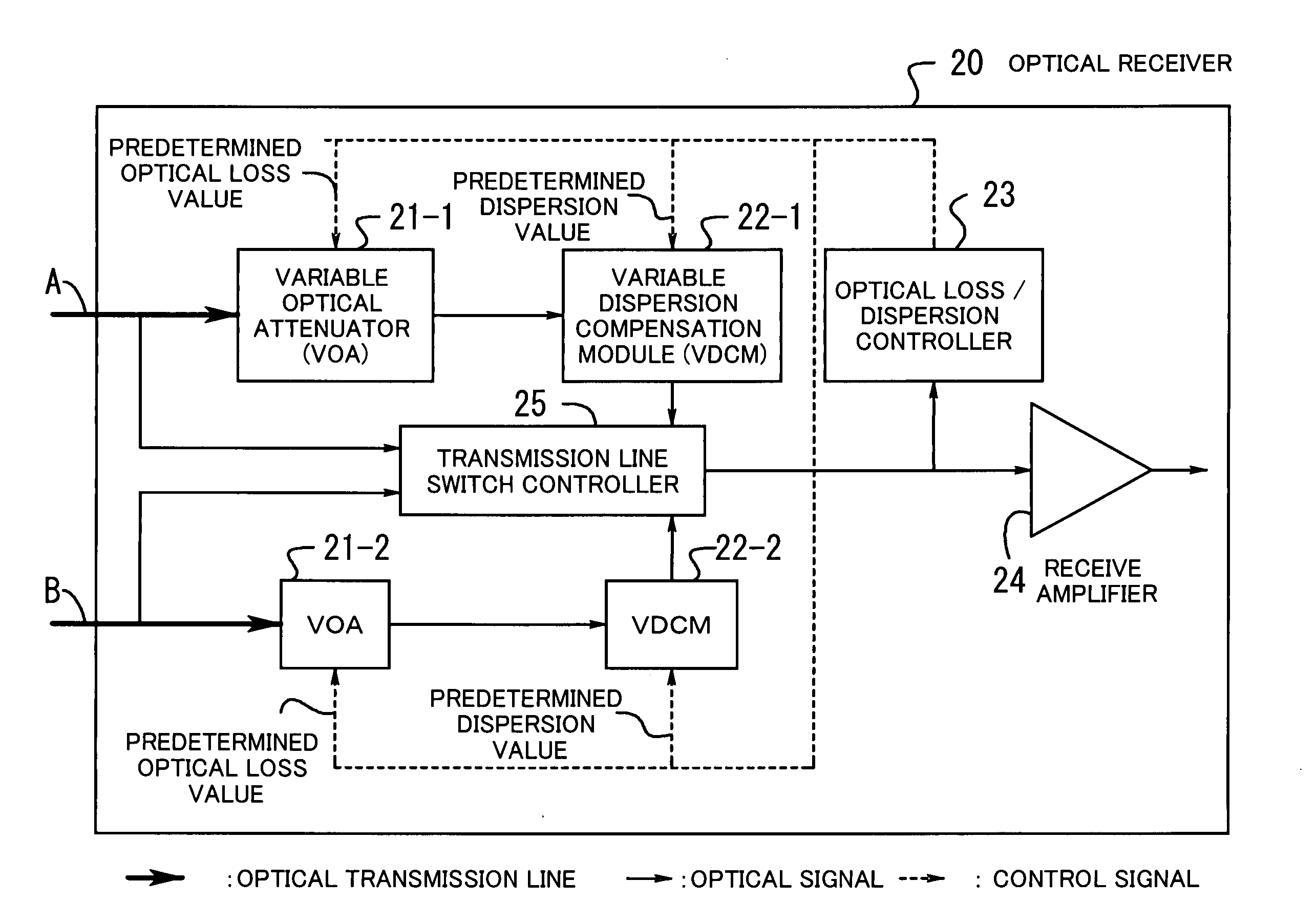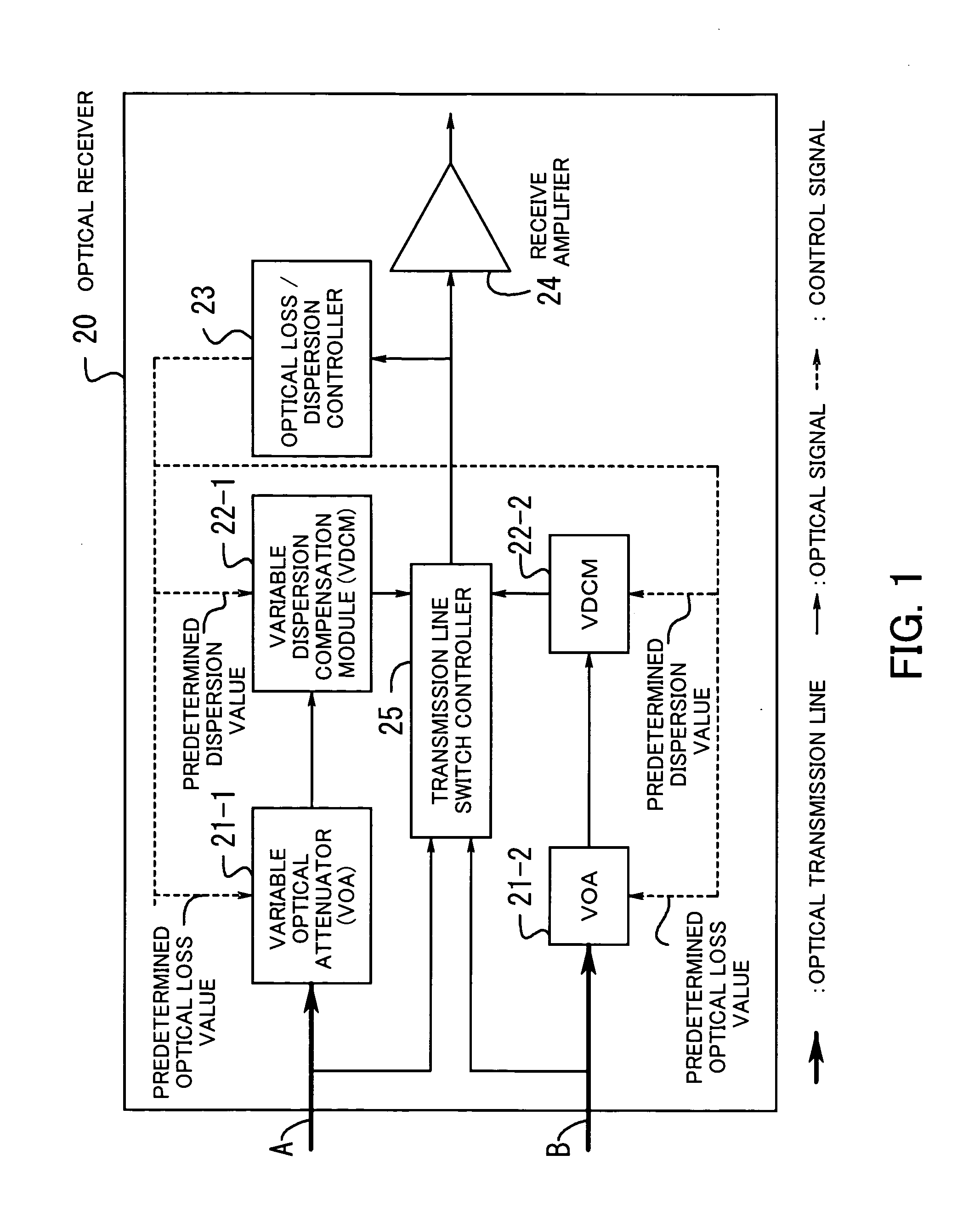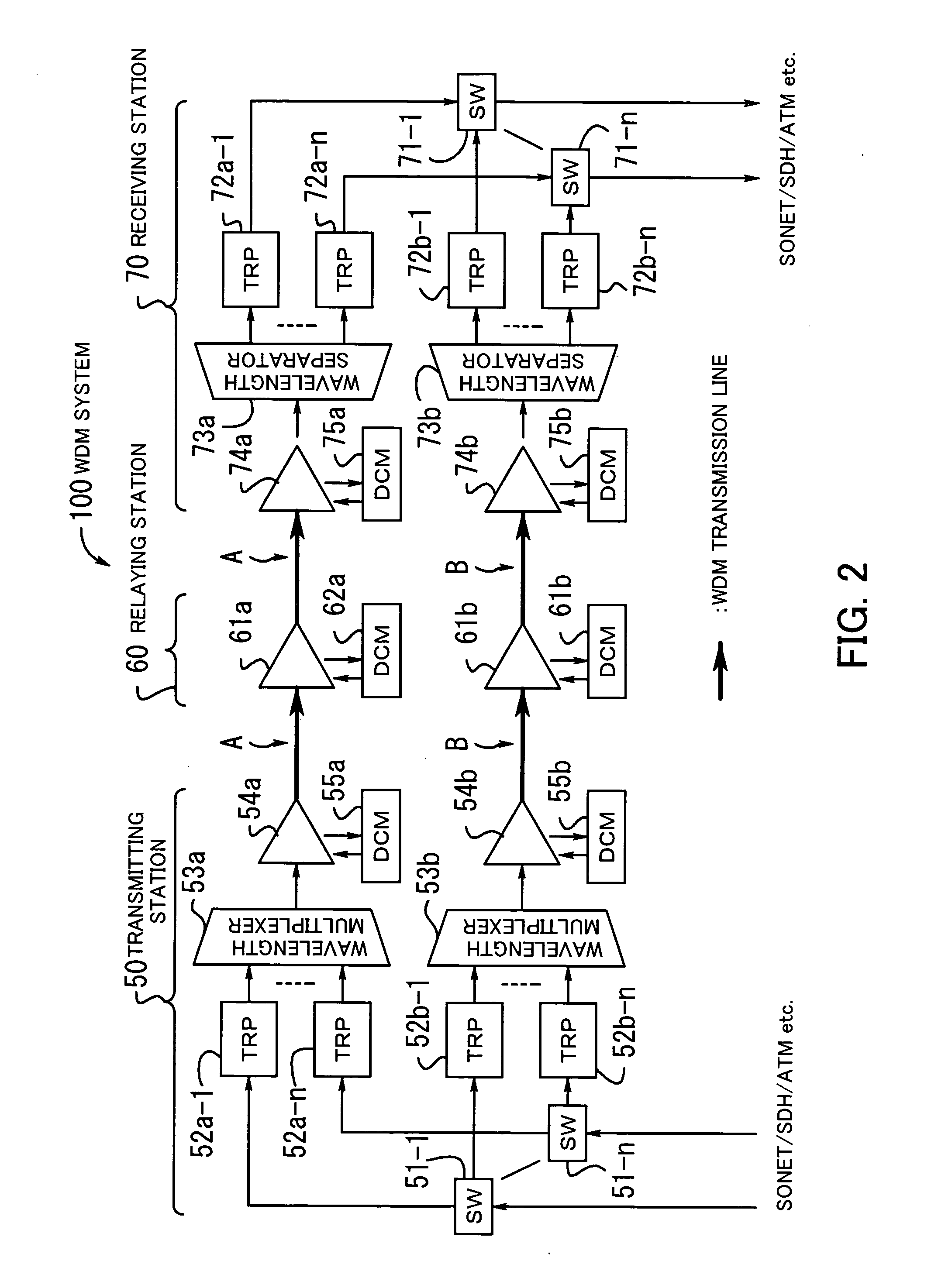Optical receiver
a receiver and optical technology, applied in the field of optical receivers, can solve the problems of unreasonable, large system size, and inability to meet the needs of large-scale systems, and achieve the effect of improving transmission quality and suppressing the redundancy of the wdm transmission line in the overall optical receiver
- Summary
- Abstract
- Description
- Claims
- Application Information
AI Technical Summary
Benefits of technology
Problems solved by technology
Method used
Image
Examples
Embodiment Construction
[0022] Hereafter, the embodiments of the present invention will be described with reference to the appended drawings. FIG. 1 illustrates the concept of the optical receiver according to the present invention. An optical receiver 20 is installed on the side of a receiving station of the system with the redundant configuration of optical transmission lines (the redundant provision of two optical transmission lines A and B in FIG. 1).
[0023] Variable optical attenuators 21-1 and 21-2 (often referred simply to as VOAs) are installed respectively on the optical transmission lines A and B prepared for the redundant configuration. These VOAs control an optical loss value of each line based on a predetermined optical loss value. Variable dispersion compensation modules 22-1 and 22-2 (often referred simply to as a VDCM) are installed respectively on two optical transmission lines A and B prepared for the redundant configuration. The VDCM controls the wavelength dispersion value for the corre...
PUM
 Login to View More
Login to View More Abstract
Description
Claims
Application Information
 Login to View More
Login to View More - R&D
- Intellectual Property
- Life Sciences
- Materials
- Tech Scout
- Unparalleled Data Quality
- Higher Quality Content
- 60% Fewer Hallucinations
Browse by: Latest US Patents, China's latest patents, Technical Efficacy Thesaurus, Application Domain, Technology Topic, Popular Technical Reports.
© 2025 PatSnap. All rights reserved.Legal|Privacy policy|Modern Slavery Act Transparency Statement|Sitemap|About US| Contact US: help@patsnap.com



